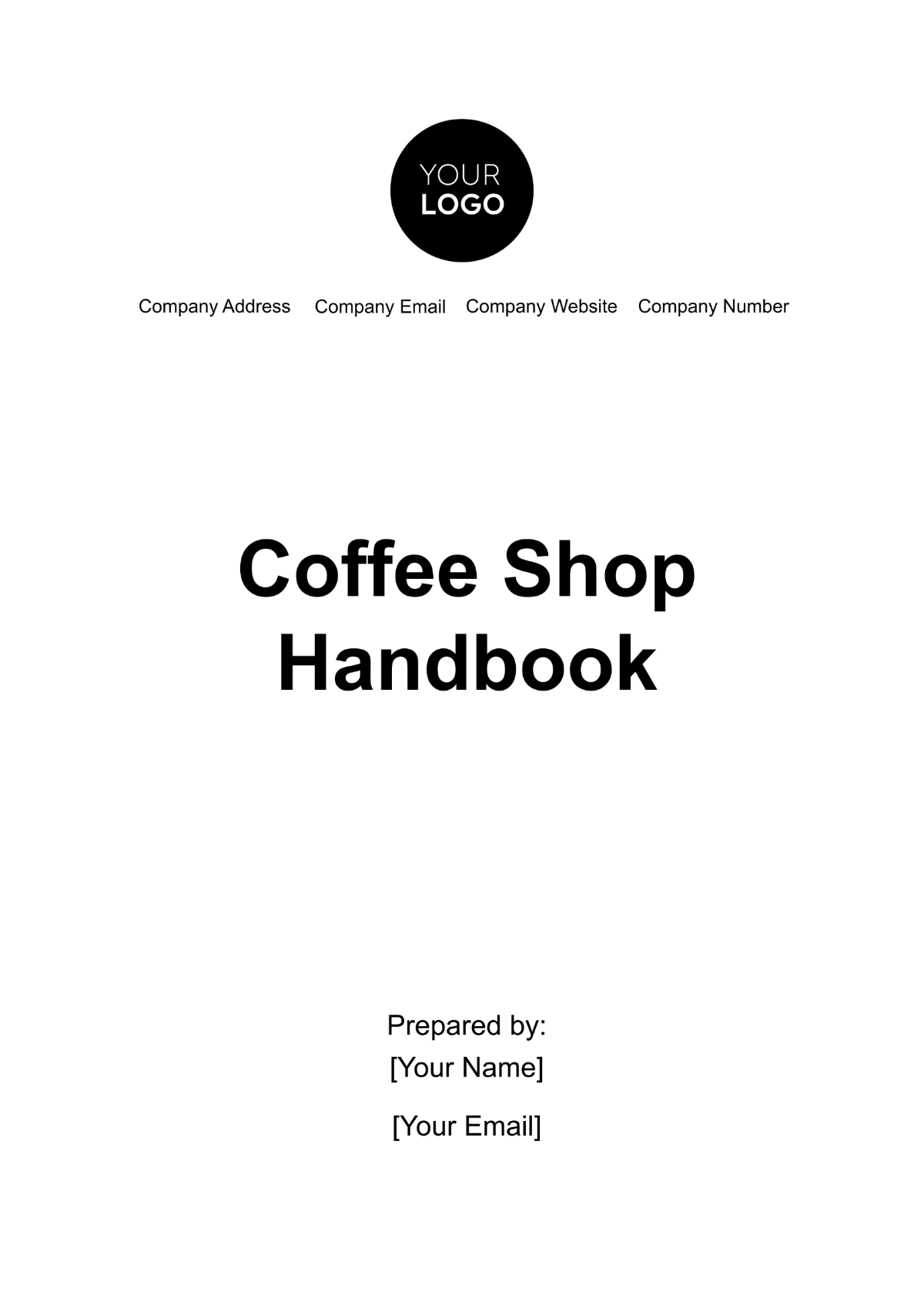Marketing Product Launch Handbook
Introduction
Every successful product launch requires a comprehensive marketing strategy. This handbook is tailored to guide teams at [Your Company Name] through the intricacies of effective product launch strategies, ensuring that our products not only meet market expectations but exceed them.
Why Product Launch Marketing is Crucial
Launching a product isn’t merely about introducing something new to the market. It's about capturing attention, building anticipation, and creating a need. In today's saturated market, consumers are bombarded with choices. Effective product launch marketing distinguishes our offerings from the competition, creates a buzz, and sets the stage for sustained sales and growth.
The [Your Company Name] Advantage:
We pride ourselves on innovation and customer-centricity. Our dedicated teams, backed by data-driven insights and cutting-edge technology, position us uniquely to transform product launches into memorable events. This handbook encapsulates our proven strategies, refined through years of experience, to guarantee the successful unveiling of our groundbreaking products. By the end of this guide, you'll have a deep understanding of our approach, techniques, and the commitment we bring to every launch, ensuring [Your Company Name] remains a frontrunner in the industry.
Pre-Launch Strategies
The pre-launch phase is a critical period that sets the tone for the product's entrance into the market. It involves meticulous planning, research, and preparation to ensure that the product resonates with the target audience and stands out in a crowded marketplace. Below are the enhanced strategies for [Your Company Name]'s pre-launch endeavors:
Comprehensive Market Research:
By harnessing the insights gained from understanding current market dynamics, we can craft strategies that resonate powerfully with our target audience. Here's an in-depth exploration of our market research pillars:
Trend Analysis: By observing and analyzing current consumer interactions, preferences, and feedback loops, we can anticipate emerging preferences. Tools like sentiment analysis and behavior tracking grant us insights into evolving consumer desires, ensuring our product always meets the zeitgeist.
Competitor Analysis: This involves evaluating the strengths and weaknesses of industry rivals. By understanding what our competitors excel at and where they fall short, we can craft a strategy that leverages their gaps and counters their strengths.
Gap Identification: One of the most direct ways to identify market gaps is by listening to the consumer. Regular surveys, feedback loops, and open communication channels can reveal what the market lacks.
Target Audience Segmentation and Profiling
To achieve resonating product launches, merely identifying our target audience isn't sufficient. We must immerse ourselves in their world, understanding their needs, motivations, and hesitations. This depth of knowledge ensures that our marketing and product strategies are deeply intertwined with our audience's aspirations and needs.
Demographic Profiling: While age, gender, and income are foundational demographic factors, delving deeper into parameters like educational background, occupation, and cultural influences can provide a richer context.
Psychographic Analysis: In today's conscientious market, aligning with consumer values is paramount. Whether it's sustainability, inclusivity, or wellness, understanding what your audience stands for can craft more connections.
Buying Behavior Insights: What motivates a potential buyer to take the leap? It could be seasonal needs, emotional triggers, peer influences, or a myriad of other factors. Recognizing these can guide timely and impactful marketing campaigns.
Setting Clear, Measurable Objectives
By establishing clear, quantifiable goals, the company not only identifies the direction of its endeavors but also establishes benchmarks that facilitate ongoing performance assessments. This ensures that our team remains aligned, our efforts are concentrated, and our resources are optimally allocated.
Guidelines for Setting Objectives:
Objectives should be explicit, leaving no room for ambiguity.
Every objective should be quantifiable to allow for precise tracking.
Set goals that, while challenging, are achievable with the available resources and timelines.
Pre-Launch Objectives for 2052:
Objective | Expected Outcome |
Increase brand awareness by 40% | 500,000 more users are aware |
Generate 10,000 pre-orders | $500,000 in revenue |
Establish partnerships with 5 influencers | Reach an additional 2 million audience |
Leveraging Data for Objectives:
In today's digital age, it's essential to utilize the plethora of available data. Platforms like Google Analytics, social media insights, and CRM tools can offer real-time updates on our progression towards these objectives. Regularly reviewing this data ensures that the company can adapt and recalibrate strategies as required, keeping us on the path to achieving our defined success markers.
Crafting a Compelling Value Proposition
A well-crafted value proposition not only communicates the product's unique attributes but also becomes the foundation upon which all marketing and communication strategies are built. This process is more than just a statement—it's a promise of unparalleled value.
Benefits Over Features: Instead of merely listing features, illustrate how these features translate into real-world benefits. If a smartphone boasts a high battery life, the benefit is the user's freedom from frequent recharges, translating to uninterrupted usage.
Emotional Connection: Narratives have a unique power to resonate. Weave a compelling story around the product, highlighting its origin, the inspiration behind it, or its impact on real users.
Test and Refine: Establish regular channels, be it through surveys or interactive sessions, where potential or existing users can voice their perceptions about your product's value.
Launch Strategies
Our launch strategies go beyond merely presenting our product; they focus on creating memorable experiences and lasting impressions. This segment delves into the intricacies of crafting an impactful product launch that resonates, engages, and convinces.
Promotion Channels:
Omnichannel Approach: In today's interconnected world, it's essential to have a presence where our audience is. Be it online platforms, offline events, or media outlets, our product launch strategy encompasses them all.
Customized Messaging: While the product remains constant, the way it's presented should vary based on the channel. A social media teaser video might appeal to younger demographics, while a detailed feature article might resonate with industry professionals.
Collaborative Promotions: Partner with complementary brands or influencers to amplify the launch's reach, leveraging their audience base for heightened awareness.
Budget Allocation for 2053 Launch:
Channel | Amount |
Social media | $400,000 |
Email marketing | $200,000 |
Influencer partnerships | $300,000 |
In-store promotions | $100,000 |
Timelines and Milestones:
Phased Rollout: Instead of a singular launch event, consider a phased approach. Begin with teasers, followed by sneak peeks, leading up to the grand launch. This staggered approach builds anticipation and engagement.
Milestone Celebrations: Celebrate and publicize smaller achievements leading up to the launch, be it completing product tests, garnering pre-launch reviews, or securing notable partnerships.
By adopting a structured, data-driven, and audience-centric approach to our launch strategies, the company can ensure that every product not only makes a grand entry into the market but also carves a lasting niche, setting the stage for sustained success and growth.
Post-Launch Strategies
The post-launch phase is where [Your Company Name] solidifies its product's position in the market, assesses the effectiveness of the launch, and refines strategies for sustained growth and engagement. This phase is crucial for adapting to feedback, seizing emerging opportunities, and nurturing long-term brand loyalty.
Feedback Collection:
Diverse Feedback Channels: Utilize online surveys, social media platforms, customer reviews, and direct interactions to collect comprehensive feedback. Every channel offers unique insights.
Engage and Respond: Instead of passively collecting feedback, actively engage with customers. Respond to reviews, address concerns, and celebrate positive testimonials, creating a feedback-friendly brand image.
Performance Analysis:
Quantitative Analysis: Utilize analytics tools to measure key metrics, such as sales numbers, website traffic, or app downloads. Compare these against pre-launch objectives to gauge success levels.
Qualitative Insights: Dive into discussions, reviews, and user-generated content to gain an understanding of consumer sentiment, their relationship with the product, and any unforeseen use-cases or benefits.
Iterative Refinement: Based on performance analysis, continually refine marketing strategies, product features, or customer support mechanisms to better cater to the audience.
Performance Metrics Post-Launch 2055:
Metrics | Outcome |
Number of units sold | 120,000 |
Increase in brand awareness | 65% |
Customer satisfaction rate | 87% |
Building Long-Term Engagement:
Loyalty Programs: Introduce reward systems or loyalty programs to incentivize repeat purchases and brand advocacy, turning first-time customers into brand champions.
Continuous Content Creation: Roll out consistent, valuable content that not only focuses on the product but also educates, entertains, or engages the audience, fostering a deeper brand connection.
Community Building: Create online and offline spaces where customers can interact, share experiences, or offer feedback. This not only provides valuable insights but also strengthens the bond between consumers and [Your Company Name].
The post-launch phase is a testament to a brand's commitment to its product and its users. Through meticulous feedback collection, rigorous performance analysis, and strategies aimed at building long-term relationships, [Your Company Name] ensures that every product continues to thrive, evolve, and resonate long after its initial introduction into the market.
Case Study: Successful Product Launch in 2051
In the ever-evolving business landscape, [Your Company Name] made a mark in 2051 with a product launch that became a benchmark for success. The launch wasn't just about the numbers; it was a symphony of strategic planning, impeccable execution, and a product that truly resonated with the market. Let's dissect this success story to distill the elements that made it a triumphant endeavor.
Background and Challenge:
While the market was saturated with similar products, the product was envisioned to offer something different. The challenge was to make this differentiation clear and compelling to the audience, ensuring it didn't get lost in the noise of competitors.
Strategy Employed:
Pre-Launch Hype: Utilizing teasers, influencer collaborations, and an interactive digital campaign, the company created a sense of anticipation, making our product a hot topic of discussion weeks before its launch.
Emotional Connect: The marketing narrative was crafted around real-life stories, highlighting not just the product's features but its impact on users' lives.
Engaging Experiences: Instead of a conventional launch event, the company organized immersive experiences across major cities, allowing potential customers to interact with the product firsthand.
Outcome and Impact:
The product surpassed projected sales figures, selling out within the first week of its launch.
The launch enhanced the company's brand image, positioning it as a frontrunner in innovation and customer-centric campaigns.
The digital campaign surrounding the launch witnessed a 70% increase in engagement, turning potential customers into brand advocates.
Lessons and Takeaways:
[Your Company Name]'s dedication to understanding and catering to consumer needs was a primary driver of success.
A cohesive blend of online and offline marketing strategies ensured that the product reached a diverse audience across multiple touchpoints.
Real-time feedback during the launch phase allowed for quick adjustments, ensuring momentum was maintained throughout.
By studying the success of our product’s 2051 launch, [Your Company Name] and other industry players can glean insights and strategies to replicate such triumphs in future endeavors, ensuring products not only launch but soar.
Conclusion
Product launches represent a harmonious blend of creativity and empirical analysis. Like an artist sculpting a masterpiece, [Your Company Name] crafts each launch with precision, passion, and a profound understanding of the audience's desires. By intertwining imaginative storytelling with analytical insights.
Our commitment to a structured methodology, paired with the agility to pivot based on real-time data, guarantees that our offerings not only capture the market's attention but also secure a lasting place in our consumers' hearts. In this dynamic dance of art and science, the company's products consistently emerge as market frontrunners, setting benchmarks for excellence and innovation.

















































